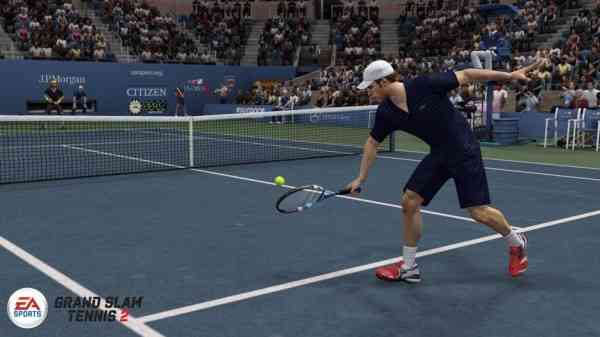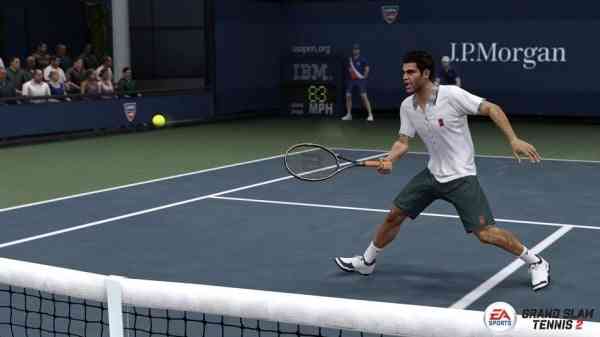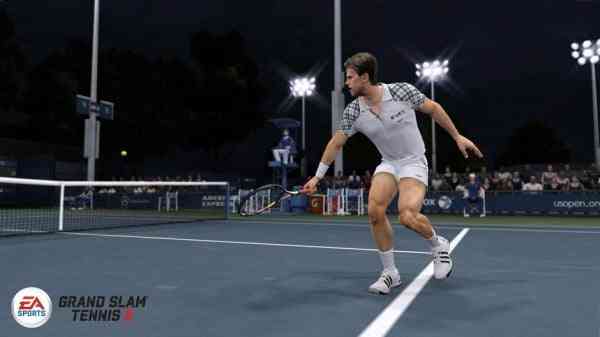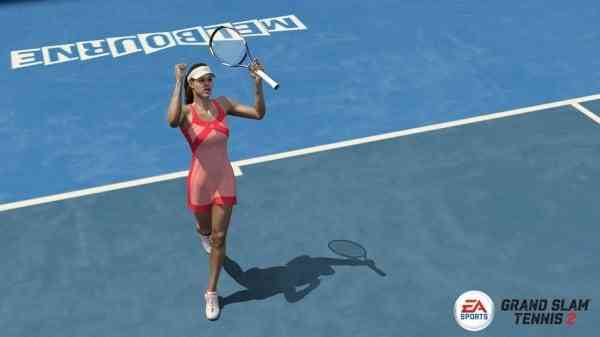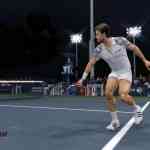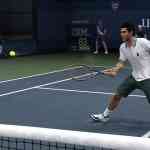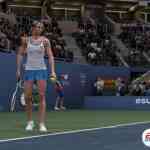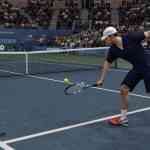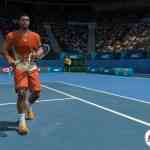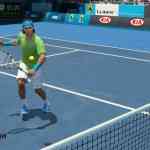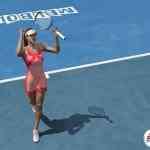Being a fan of the sport of tennis I was really excited to get my hands on Grand Slam Tennis 2 by EA Sports. After a decently successful debut exclusively on the Wii, the sequel finds its way onto the other consoles with a new control scheme and full licencing for all of the major Grand Slam tournaments and players. How does it play out? Read on.
It has been said to me on a few occasions that tennis games are nothing more than a glorified version of Pong. As ridiculous as that statement may be, some still believe it. I, for one, do not agree as tennis games have come a long ways over the years. Tennis fans can now put virtual spins on the ball, deliver power serves, angle shots and play with a number of colorful characters from the sport both past and present. Grand Slam Tennis 2 is no exception and is anything but a glorified Pong game.
Historically tennis games have mapped the different shot types to the face buttons. Termed Total Racquet Control, Grand Slam 2 introduces twin stick controls to the series and it is a great fit. Standard flat spin shots are handled by moving the right stick in the direction you want the shot to go. The quicker you press up, the deeper the ball should go on the court. Want to take something off a shot? Ease the thumb stick in the direction a bit slower for more finesse. This applies to both the more aggressive top spin shots and defensive slices which can give you more time to get back in to position. Much like a slap shot in NHL you can add power on the top spin by holding back on the stick before moving it forward. You simply pull the stick back and let it go for slice shots. Simple trigger modifiers allow you to do drop and lob shots.
Serving is handled much in the same way as the other shots. While there is a power meter on the screen it is very hard to time a good release by just following the meter alone. It is far easier (and natural feeling) to just time your swing with the animation on screen. This just feels way more natural since you’re not focused on a power meter. This all comes with a bit of a learning curve but it is well worth it. This is easily the best controlling tennis game I have ever played as serving and making simple shots feels natural.
Grand Slam 2 offers a 10-year career mode where you can create your own character and guide them through the season schedule of tournaments. The focus here is on the Grand Slam events. For the first time in any tennis game, all four majors are fully licenced and represented. This is a big deal for tennis fans. I put it on par with a game like Tiger Woods including The Masters and other Majors. Speaking of Tiger Woods, if you are familiar with the career progression in that game you will find yourself right at home here. As you play though the career you earn ability points which can be attributed towards increasing various stats including power, accuracy, speed and stamina. You can also acquire new clothes and equipment which may or may not offer a performance boost just like in Tiger. While you earn XP by playing the tournaments you are also offered opportunities to play exhibition matches and training mini-games to boost your stats.
The problem here is that Grand Slam Tennis 2 is very “vanilla”. There is not a lot to spice things up between events. Training with mini-games lack the zest that other tennis games before it have offered. After a few games the game starts to feel stale and there is enough interesting things to keep the fun factor levels high. The career mode is extremely structured and lengthy. In order to get deep into this game you are going to have to love the game of tennis as casual tennis gamers may simply get bored after a while.
Outside of the career mode you have a good selection of online options including ranked head to head and tournament play. It still surprises me that, to this day, no one has gone and given players the ability to create their own private tournaments like XSN offered. You can however replay several great Grand Slam moments as part of the single player. This is a nice diversion from the career portion of the game. I should also mention Playstation Move compatibility. You can either play a simplified version where you just swing the Move to make the swing and the game moves for you or you can use the navigation controller to move. Not so easy for the two handed backhand this way. I prefer my video game tennis action with butt firmly planted on the couch.
Another highly touted feature is the new Professional, Realistic and Organic AI system. To me this appears to be more about replicating the behaviours of the pros while playing the game. The individual subtleties that you will find watching each of the pros on TV are present in the game. Even Boris Becker’s subtle double clutch rocking before his serve is there. That’s all fine and dandy making for a realistic representation of the sport but when it comes to the actual game play, I do not feel the AI has evolved much past what we have seen in other games. Angles are still the key to your success and the money play of serving out wide, rushing the net and volleying cross court for easy points still applies. I am basically using the same tactics back when I played tennis on the Sega Dreamcast and it still works effectively.
What also bothers me about this game is the shortage of unforced errors. As good as the controls are everything is a bit too automatic. You simply do not hit it out or into the net enough. Perhaps this is by design. It does keep the action going and points become more about hitting winners which can help with frustration levels. There’s also a lot going on with the new control scheme yet it does feel a bit off. The penalty for not getting the timing right seems to be a less effective shot that lands in bounds rather than a real burner that just misses the line on the wrong side.
As in the majority of EA Sports games the presentation values in Grand Slam 2 are high. The visuals on-screen are a good representation of what you would see if you were watching a TV broadcast. I’ve always enjoyed EA’s GameFace feature which allows you to upload a photo of yourself to EA’s website and then import it into the game. I’m glad to see it here even if my character looks awfully artificial. Actually, while the pros in the game are all identifiable, they aren’t the most realistic characters I’ve seen. The players themselves animated seamlessly and the pros included in the game have their characteristic nuances in their stances, movements and swings. The stadiums are faithfully represented even down to boom mics mounted on the walls. Everything from the judges to the ball boys, the stadiums are authentic looking and look just like their real-life counterpart.
The broadcast quality presentation continues when it comes to how Grand Slam Tennis 2 sounds. The sound of the ball hitting the racquet is well represented. It even echoes off of the stadium walls. Players grunt and exert themselves as you would expect them to do in real life, the crowd reacts appropriately to good shots and there is good in-match commentary between John McEnroe and Pat Cash. McEnroe (who also is a playable character; wooden racquet and all) is a bit stiff and repetitive at times though.
Overall, EA Sports Grand Slam Tennis 2 is the best controlling tennis game I have played to date. The excellent controls translate a level of feel and touch that you just cannot get by mashing buttons for different shots. Unfortunately the career mode comes up a bit short. It is just too much of the same thing over and over again with not enough in between games to keep things fresh. Good presentation values make this a no brainer for fans of the sport. Others however might want to rent the game first. With some tweaks to the career and the AI, the inevitable next game in the series has the potential to be a real winner.
